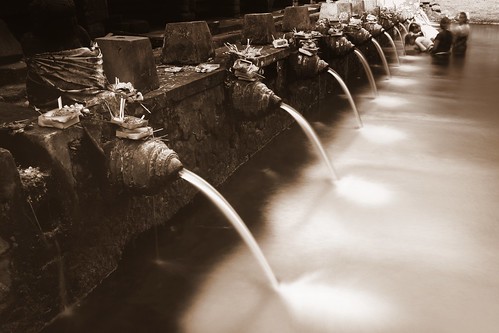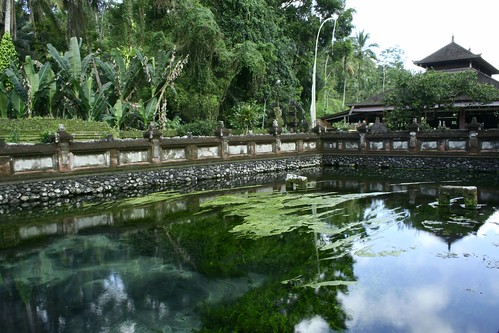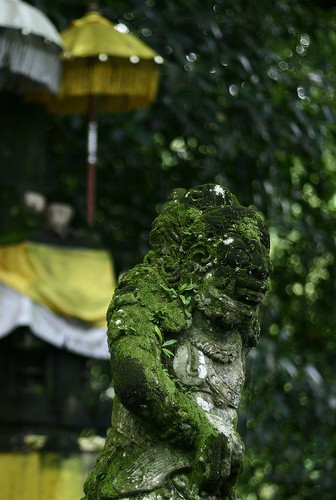Sept 14, 2006
Melasti is one important ceremony in Hindu Bali. It is the time of the Balinese year when Hindus take religious symbols to the beach for purification. The celebration is generally timed three days before Nyepi, the Balinese New Year, or in some auspicious day dictated by local custom. It was just my luck that when I visited the seaweed farms of Kutuh, it was that auspicious date.
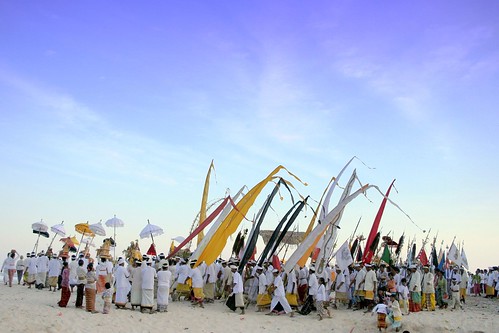
Kutuh, Nusa Dua, Bali, Indonesia
Canon EOS 350D Digital, 1/640s, f/5.6, 27mm, ISO 400, +1/3 EV
The seaweed-farming community of Kutuh lives by the southern shores of Bali. For those familiar with the tourist enclave of Nusa Dua, it is not just a flat coast of white beaches. The cape is bisected by winding hills and Kutuh is one of the few secluded beaches that could only be accessed through an arduous ride over steep limestone cliffs. Away from tourism bustle as for now, Kutuh nevertheless values tradition so even without outside spectators, they hold religious rites in full grandeur and fervor. The Melasti celebration I witnessed was no artificial show.
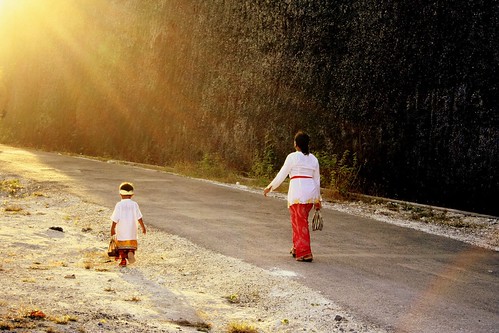
Some villagers we met along the road. They were on the way to the temple, ahead of the rest of the people who were still on the beach.
Canon EOS 350D Digital, 1/320s, f/5.6, 55mm, ISO 400, -1/3EV
As we approached the beach, dusk was settling in. The time was 20 minutes before sundown. Most of the people were buzzing with energy as they converged at the wide bamboo altar. I was the only non-Balinese in the beach. I squatted on the sand by the sidelines in a vain attempt to be inconspicuous but the Balinese, as always, were gracious and did not mind me at all.
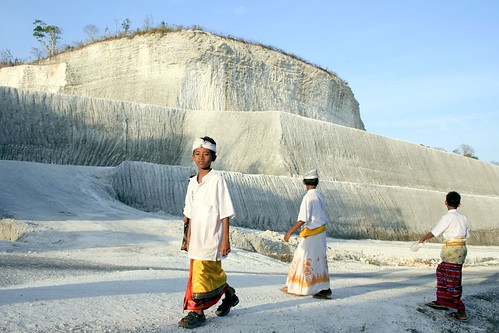
Boys walking toward the temple. Behind them are calcium carbonate limestone hills being bulldozed to pave way for wider roads.
Canon EOS 350D Digital, 1/640s, f/5.6, 21mm, ISO 200, +1/3 EV
I barely had time to take a few pictures when the villagers began to move. Led by village elders, guided by shaman priests and directed by the clanging percussive rhythms of the gamelan, the people began circling the white beach in concentric patterns. Excitement was everywhere.

Canon EOS 350D Digital, 1/500s, f/5.6, 24mm, ISO 400, +2/3 EV

As sunset approached, only a few men remained on the beach as most of the villagers already went off to the temple several hills away.
Canon EOS 350D Digital, 1/1000s, f/3.5, 22mm, ISO 400
The sight was dizzying. The procession became a human snake that simply went swirling and spinning. People were carrying and waving penjor banners, pajeng umbrellas, fabric cordons, banners, offerings and even small altars. People were reciting chants with the gamelan drowning their prayers. This was sweet sensory overload.
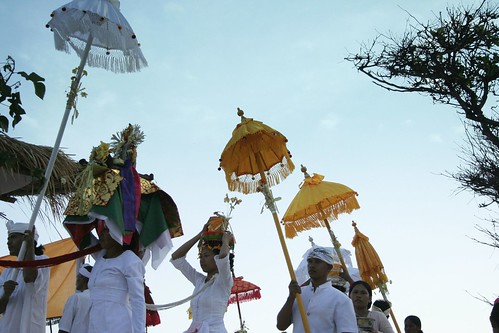
Canon EOS 350D Digital, 1/1000s, f/5.6, 39mm, ISO 400, +2/3 EV
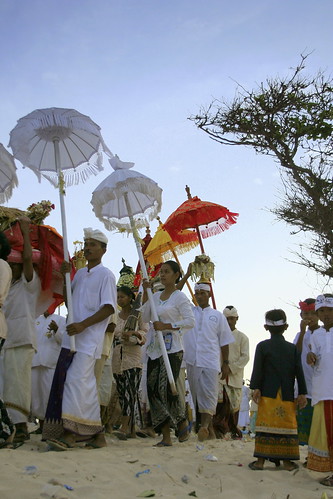
Canon EOS 350D Digital, 1/1000s, f/5.6, 31mm, ISO 400, +2/3 EV
Purposely, the parade left the beach and headed to the hills. In a few minutes, the beach totally became devoid of life. As the tailend of the procession disappeared from view, there was only me and my companions left.

Canon EOS 350D Digital, 1/125s, f/5.6, 55mm, ISO 400
Climbing the hills and getting to the temple some 5 kilometers away on foot and under vanished light was no mean task. What looked like a sacrifice to me was but a normal celebration in Kutuh. It is all perspective and I have a feeling that the Balinese got it right.
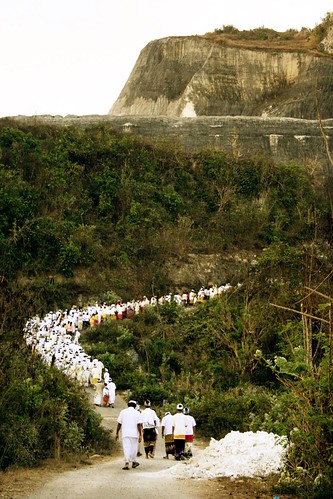
Canon EOS 350D Digital, 1/100s, f/5.6, 48mm, ISO 400, -1/3EV

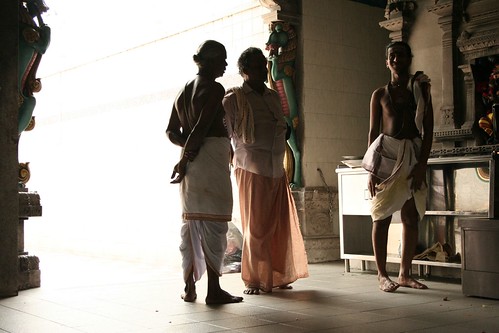
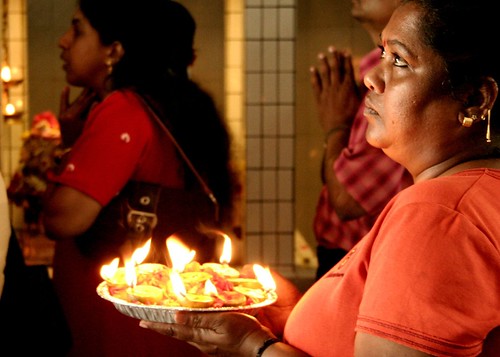















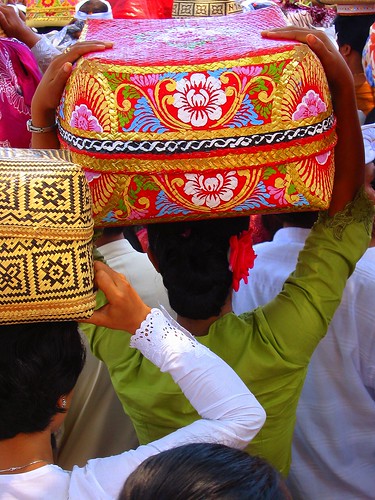
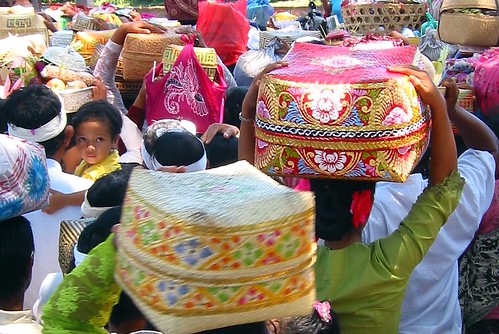
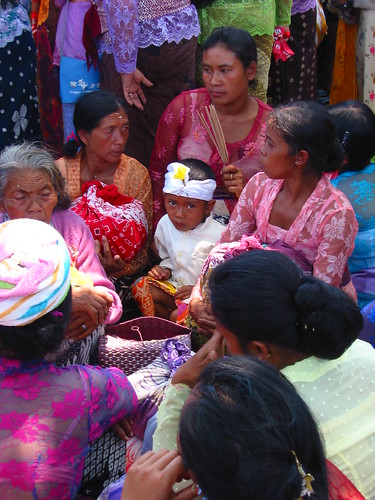





![Tirta Empul [2]](http://farm3.static.flickr.com/2196/2451785794_5902a0e7ce.jpg)
